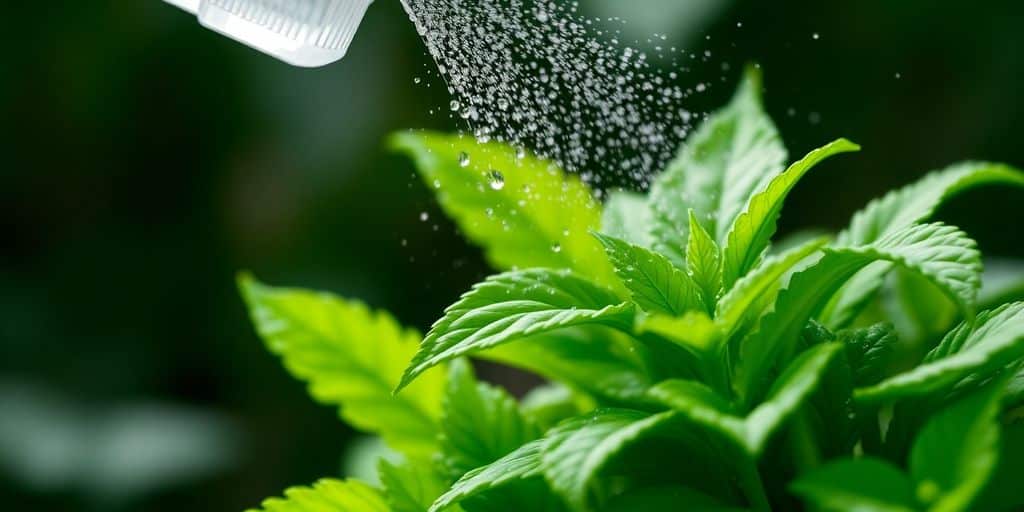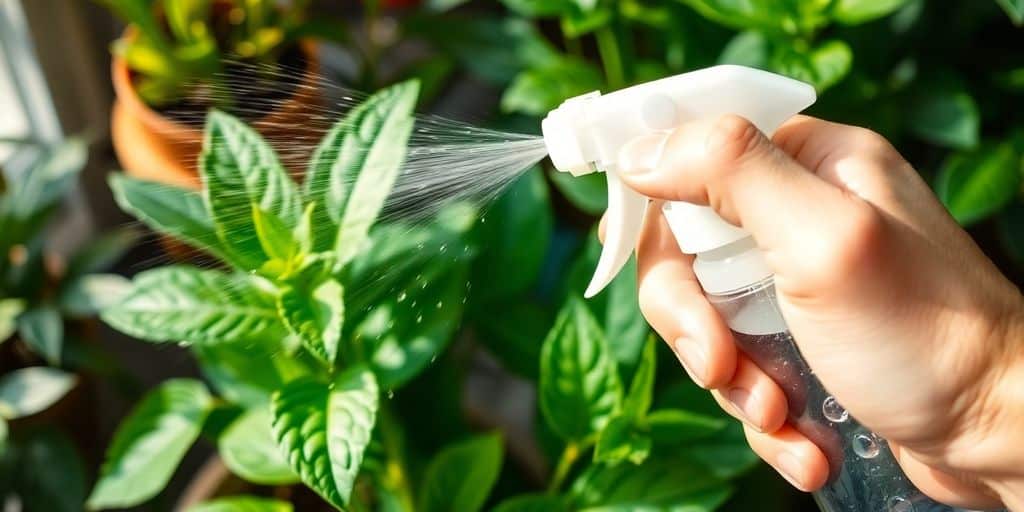How to use spray bottles in daily plant care is an important skill for anyone looking to keep their greens healthy and vibrant. Spraying helps maintain the right humidity and can prevent common issues like dry leaves. It’s a simple technique that can make a big difference in your plant’s well-being.
Understanding when and how to spray your plants properly ensures they get the moisture they need without overwatering. Different plants have different needs, so tailoring your approach is key. With the right routine, your plants will thrive and grow stronger every day.
In this article, you’ll learn practical tips for mastering the use of spray bottles in your plant care routine. Whether you’re a beginner or experienced gardener, these insights will help you boost your plants’ health. Let’s dive into easy ways to keep your greens flourishing.
Key takeaways
- Spray bottles are great for controlling moisture and humidity for your plants.
- Different plants need different spraying techniques, so adjust your approach accordingly.
- Regularly check your plants for signs of moisture needs to avoid overwatering.
Understanding the role of spray bottles in plant care

Benefits of using spray bottles for watering
Okay, so, let’s talk spray bottles. I reckon they’re more useful than folks give ‘em credit for. For starters, they give you way more control over how much water your plants are getting. Think about it: you’re not dumping a whole glass of water in there, potentially drowning the poor things.
Instead, you’re giving them a gentle mist, which is especially great for seedlings or plants that don’t like soggy roots. Plus, it’s kinda satisfying, right? Seeing those little droplets glisten on the leaves? Here’s a few benefits:
- Prevents overwatering, which can lead to root rot.
- Distributes water evenly, ensuring all parts of the soil get moisture.
- Ideal for delicate plants that can’t handle a heavy pour.
How spray bottles help with humidity control
Alright, so it’s not just about watering the soil. Spray bottles are also aces at boosting humidity, which a lot of houseplants absolutely love. Where I live, the air can get super dry, especially in the winter when the heater’s cranked up.
A quick spritz or two with a spray bottle can make a world of difference. It’s like creating a mini-rainforest for your leafy buddies. Just remember, not all plants are fans of getting their leaves wet, so do a little research before you go misting everything in sight. I learned that the hard way with my succulents – they were not impressed! Here’s how it helps:
- Increases moisture in the air around the plant.
- Helps prevent dry leaf tips and edges.
- Can be used to create a more humid microclimate for humidity-loving plants.
Techniques for effective spray bottle usage
Best practices for misting plants
Alright, let’s talk misting – it’s not just point and spray! The key is even distribution and knowing when to hold back. I’ve seen folks go overboard and end up with soggy leaves, which is a no-no. Think of it like a gentle rain, not a monsoon. Here’s what I usually do:
- Hold the spray bottle about 6-12 inches away from the plant. This gives a nice, even mist.
- Aim for the foliage, but don’t soak it. A light coating is all you need.
- Mist in the morning so the leaves have time to dry during the day. This helps prevent fungal issues.
- Use room temperature water. Cold water can shock some plants, and nobody wants that.
Adjusting spray techniques for different plant types
Not all plants are created equal, especially when it comes to misting. What works for a fern might not work for a succulent, ya know? I learned this the hard way after nearly drowning my poor cactus. Here’s the lowdown:
- For humidity-loving plants (like ferns, calatheas, and orchids): Mist more frequently, maybe once or twice a day, especially if your air is dry. They’ll soak it right up!
- For plants sensitive to leaf wetness (like African violets): Avoid misting the leaves directly. Instead, mist around the plant to increase humidity.
- For succulents and cacti: These guys generally don’t need misting at all. They prefer drier conditions, so leave them be.
- For fuzzy-leafed plants (like some begonias): Be careful not to over-mist, as the fuzz can trap water and lead to rot. A light misting now and then is usually enough.
Maintaining plant health with regular spraying
Regular misting can do wonders for your plants, but it’s not a magic bullet. It’s more like a supplement to good overall care. I’ve found that consistent misting helps keep my plants happy and healthy, but it’s important to watch for signs that something’s off. Here’s what I keep in mind:
- Increased humidity: Misting helps raise the humidity around your plants, which is especially beneficial in dry environments.
- Dust removal: A gentle mist can help remove dust from leaves, allowing them to photosynthesize more efficiently.
- Pest prevention: Regular misting can help deter some pests, like spider mites, which prefer dry conditions.
- Overall plant health: A happy, well-hydrated plant is less susceptible to disease and other problems.
Maintaining plant health with regular spraying

Signs your plants need more moisture
Okay, so how do you know if your leafy buddies are thirsty? Well, it’s not like they can just tell you, right? But they do give you clues. One of the most obvious signs is drooping leaves. If your plant’s leaves are looking a little sad and droopy, that’s a pretty good indicator that they’re not getting enough water.
Also, check the soil. If the top inch or two feels dry to the touch, it’s time to give them a drink. Another thing I’ve noticed is that the leaves might start to get crispy edges or turn yellow. Keep an eye out for these signs, and your plants will thank you!
How to prevent overwatering with spray bottles
Now, here’s the thing: you don’t want to go overboard with the spray bottle either. Overwatering can be just as bad as underwatering, maybe even worse! The key is to find that sweet spot. I like to use a spray bottle because it gives me more control over how much water I’m giving my plants. Instead of drenching the soil, I can just give them a light mist. Here’s what I do:
- Check the soil moisture: Before you even think about spraying, stick your finger in the soil. If it feels moist, hold off. If it’s dry, go ahead and give it a mist.
- Spray in the morning: This gives the leaves time to dry out during the day, which helps prevent fungal diseases.
- Observe your plants: Pay attention to how your plants are responding. If they’re looking perkier, you’re on the right track. If they’re still drooping, you might need to adjust your watering schedule. Remember, every plant is different, so what works for one might not work for another. It’s all about finding what works best for your plants. I’ve found that a little trial and error goes a long way!
Wrapping it up: Your path to yhriving greens
So, there you have it! Using a spray bottle for your plants can really make a difference. It’s all about keeping things simple and consistent. Remember to check your plants daily and adjust your watering as needed.
A little attention goes a long way in preventing issues like root rot or mold. Plus, with the right techniques, you’ll see your greens flourish like never before. So grab that spray bottle and get to work! Your plants will thank you for it.
Frequently asked questions
How often should I spray my plants?
You should spray your plants daily or every few days, depending on their needs and the humidity in your home.
What type of water is best for spraying plants?
Using room temperature, chlorine-free water is best for your plants to avoid shocking them.
Can I use a spray bottle for all types of plants?
Most plants benefit from spraying, but some prefer dry conditions, so it’s good to check the needs of each specific plant.
